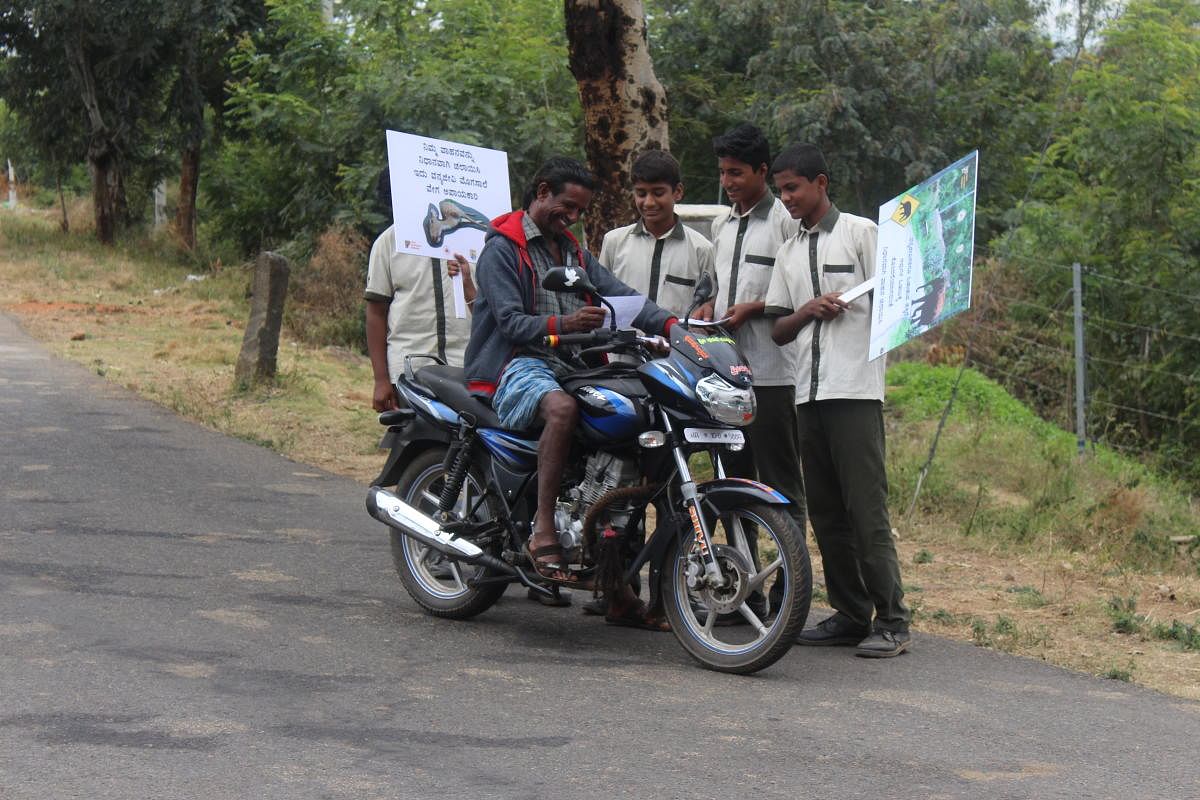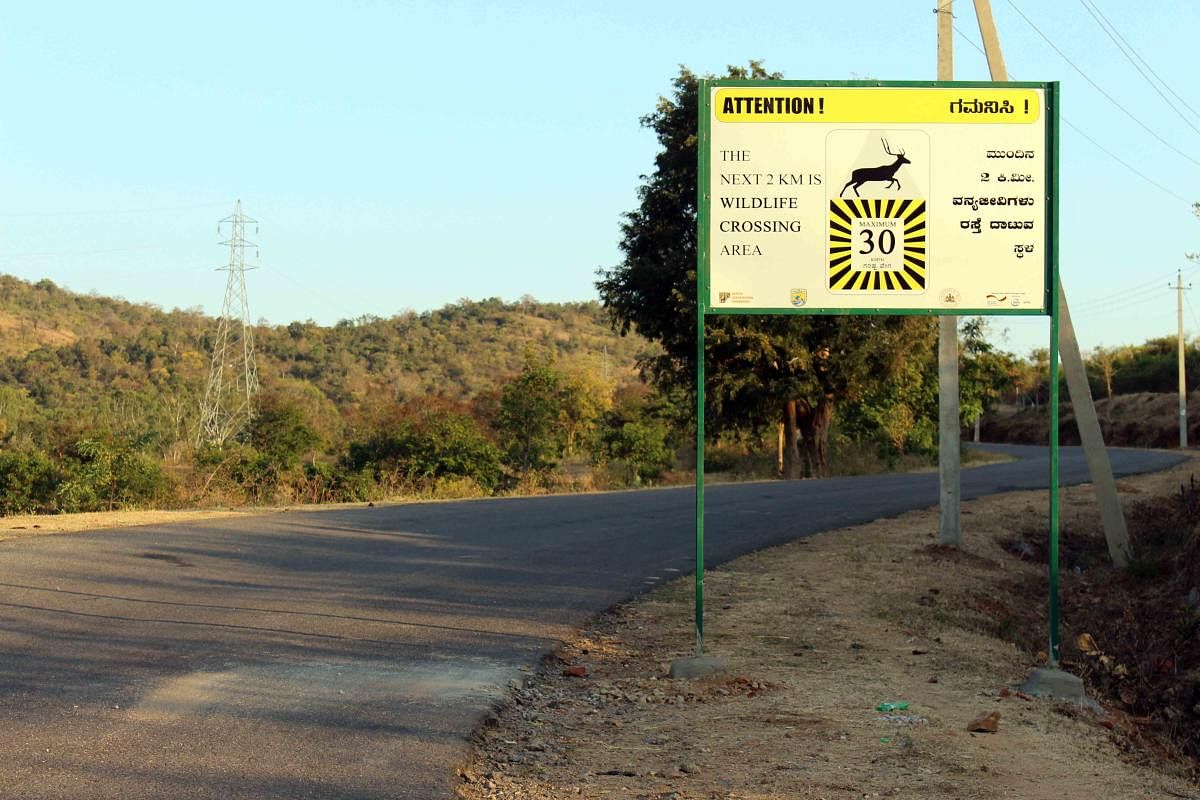

SMS alerts, automated voice calls, LED flash-lights at critical elephant crossings and digital display boards at crucial junctions have helped people of 240 villages in Hassan district coexist with elephants. The belt, which used to see an average of four human fatalities a year, has recorded no deaths due to human-elephant conflict in the last 22 months.
Read: No end to conflict as humans, elephants fight for space
The first sustained step towards this was taken in 2015, after the mass capture and relocation of 22 wild elephants in 2014, which didn’t help mitigate human-elephant conflicts.
Technology and collective action are central to this collaborative initiative by the Nature Conservation Foundation,
Forest Department and local communities.
“Reinforced by our success in using technology to reduce human-elephant conflicts in Tamil Nadu’s Valparai, we studied the Hassan situation. This complex landscape dominated by monoculture plantation, coffee estates and paddy fields pose conservation challenges,” says Anand Kumar, a scientist with Nature Conservation Foundation (NCF).
After studying the circumstances, identifying areas where the likelihood of encounters is high and analysing the patterns of human-elephant interactions, an NCF team headed by elephant researcher Vinod Krishnan decided to follow the Valparai model to empower people make informed decisions by using technology.
During their study, the team had found out that 72% of the human deaths (39 deaths from 2010 to 2018) were due to surprise encounters. Around 63% of people lost their lives on roads. This indicated the need for alerts about elephant movement.
Over 3,800 people get messages in Kannada about the movements of the elephants in the region, while voice messages alert those who can’t read. “People are proactive and report elephant sightings. I get 50 to 60 calls in a day from villagers,” says Vinod.
The Forest Department radio-collared three female elephants to track the movement of herds and set up rapid response teams, comprising trained local youths, to track the movement of elephants and manage situations of conflict.
These activities have also helped change the attitude of people towards elephants and empathise with them. Now, they don’t resort to harmful ways to chase elephants away, thus reducing the stress on the animals.
However, crop damage is something that is not resolved yet.
“Jackfruit found in coffee plantations and paddy are palatable crops for elephants. Availability of water is an added attraction. We understand that they frequent our fields in search of food and water. But how can we sustain ourselves if we lose the crop every year?” asks Poornima, a coffee planter.
“Concerted efforts involving all departments concerned are crucial to move towards peaceful coexistence, which is possible even in a fragmented patch like Hassan,” Vinod says.
Comprehensive approach
In another effort, in MM Hills Wildlife Sanctuary in Chamarajanagar district, an initiative led by Conservation Biologist Sanjay Gubbi identified extraction of tree species for firewood and vehicular traffic as the key threats to two important forest corridors - the Doddasampige-Edyaralli corridor and The Hoogyam corridor.
As an initial measure, they provided LPG connections to 585 families living along these corridors as an alternative to firewood usage. “We found that per capita firewood usage came down by 65% after this intervention,” says Sanjay Gubbi.
Ranga Shetty, a beneficiary from Lokkanahalli of Hanur taluk, explains how situation changed for the better in his village. “Initially, 138 families were given LPG connection as part of the project. But realising the advantages, all 800 families have opted for LPG connection in a span of three to four years.”
Other villages along the corridor have also completely shifted from firewood to LPG. Such a transformation was possible, as the project linked firewood use not just to forest degradation but also to human health. Sanjay explains, “After conducting chronic obstructive pulmonary disease tests on women from beneficiary families, we found that 70% of the women had reduced lung functions. We carried out the same tests one year after them getting LPG connection and noted that their lung function had stabilised.”
To ensure that the vehicular traffic on State Highway 38 that bisects the Doddasampige-Edyaralli corridor doesn’t impede wildlife movement, the team led by Sanjay installed road humps, signboards scientifically and carried out awareness programmes for drivers.
The results showed that the vehicular speed, especially of large vehicles, which are an important cause of wildlife mortality due to accidents, had reduced considerably.
Both projects were implemented by the Nature Conservation Foundation with support from the Forest Department.
“Comprehensive and long-term corridor conservation interventions help reduce multiple threats. The interventions should also be scientifically measured to monitor their effectiveness,” says Sanjay.